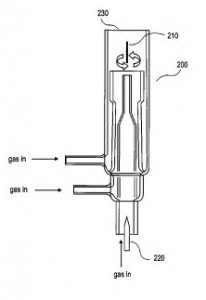Hip Replacements – A Brief Patent History
Nearly one year ago, on Tuesday, April 8, 2014, I had a total right hip replacement. The surgery went very well. The biggest problem I encountered was nearly non-stop hiccups for the first week, which was likely due to the anesthesia. I was walking the next day, and I am now walking normally and continue to strengthen my leg muscles. With this personal anniversary, I thought it would be interesting to take a look at the evolution of hip replacement technology through the lens of issued U.S. patents.
Hip surgeries have been taking place for at least 300 years, and have progressed from rudimentary surgeries to the sophisticated total hip replacement (i.e., total hip arthroplasty or THA) surgeries that are so commonplace today. According to the CDC, during 2010 there were 332,000 in patient total hip replacements performed in the U.S. Indeed, hip replacement surgery today is widely recognized as one of the most successful surgical interventions ever developed. See Early Attempts at Hip Arthroplasty.
Modern hip replacement surgery really dates back to the 1960s, with the development of new devices that reduced the wear sustained by artificial hip joints over time, and which provided more predictable outcomes.
Intel Patents Biocompatible Coatings for Medical Devices
 Starting at the beginning of January 2013, I started publishing what we call Companies We Follow over on IPWatchdog.com. The primary author of the series is Steven Brachmann, a freelance journalist who has covered the technology sector for years.
Starting at the beginning of January 2013, I started publishing what we call Companies We Follow over on IPWatchdog.com. The primary author of the series is Steven Brachmann, a freelance journalist who has covered the technology sector for years.
One of our goals is to come up with a representative set of companies that we could realistically profile from time to time in order to get a feel for what the company is working on in terms of research and development. For the most part, you know when you profile Apple that you will see a lot of mobile and wireless technologies and associated gadgets, our profiles of IBM always show that they are heavy into cloud computing and intelligence-based software systems (think Watson) and our AT&T profiles typically show a company that focuses on communications and multi-media technologies. Then there are companies like Qualcomm that work on a variety of diverse, cutting-edge technologies. But, for the most part, you know what types of innovations you are likely to find.
10.31.13 | Patent Issues, posts | Gene Quinn


No Comments
04.15.15 | Biotech, Patent Issues | Gene Quinn